What to Know Before You Tow a Fifth-Wheel Trailer

There’s a good chance that the computer you’re reading this article on and the food you had for breakfast this morning came off the back of a truck and that’s why the fifth-wheel hitch is so important. It is the primary link between tractor and trailer.
But you don’t have to be a big rig driver to use a fifth wheel. The most common personal use fifth-wheel trailers are for recreation, including horse carriers and travel trailers, meaning plenty of people are hitching up fifth wheels every day.
Why go Fifth-Wheel?
A fifth-wheel hitch is all about optimal weight distribution.
Ultimately, the dynamics of your tow vehicle will be increasingly compromised as the load on your rear-mounted hitch gets heavier. With a fifth wheel, the weight placed on the truck is between the rear axle and the cab, eliminating the pivot point and helping to spread the load, although the rear end still bears the brunt of it. This makes sure that the dynamics of your tow vehicle are affected less as compared to a trailer hooked up to the rear.
Top 10 Best Weight Distributing Hitches and Why You Need Them
Another advantage to towing with a fifth wheel is the increased turning radius. The front end of the trailer sits above the truck bed helping to reduce overall length. This setup also allows you to turn the trailer up to ninety degrees and even a little more in some cases, making it easier to back up.
And once your rig is backed into its spot – whether it be a motor home or a trailer – a fifth-wheel hitch allows you to unhitch your trailer quickly and easily so you can use your tow vehicle independently.
What kind of truck do you need?
So the advantages are clear, but where do you start when looking for the appropriate tow vehicle and fifth-wheel hitch?
First, you need a truck. While a half-ton, like a Ford F-150, Ram 1500 or Chevy Silverado 1500, is enough to pull a fifth wheel, most people who spring for a trailer big enough to warrant a bed-mounted hitch will likely need at least a three-quarter-ton truck like a Ram 2500, Ford F-250 or Silverado HD.
You want the Gross Vehicle Weight Rating (GVWR) of the truck to exceed the weight of the truck and trailer tongue weight combined, by at least 10 percent, which is a much easier rule to follow with a larger truck. The payload of your pickup also needs to be suitable to handle the tongue weight placed in the bed. Curb weight is also important, as the heavier your tow vehicle is, the better it will handle the weight. And when it comes to hauling a big fifth-wheel, the last thing you want is to feel your trailer overpowering your truck.
The configuration of the truck is also important, mainly for the bed length. An eight-foot bed, the longest you can get on any pickup, is always your best bet when pulling a fifth-wheel mounted trailer, because you need space in front of the hitch itself for the trailer overhang to clear the back window of the truck cab.
A short-bed truck is useable, but you need to take extra precautions to be sure the trailer is secure. One answer is the use of a slider hitch. This allows you to move the actual connection point of the trailer and hitch forwards and backwards. It is placed forward while the vehicle is in motion to make sure the weight is centered on the truck, and it is pushed back when you need to maneuver through a tight space to allow the front of the trailer more space to swing.
You can also install an extended pin box on your trailer that moves the kingpin connection forward, creating more clearance for the front end of the trailer. Keep in mind, an extended pin box will place more stress on the frame of your trailer.
Time to Install
Once you have your truck and trailer matched, it’s time to install your fifth wheel. You can do it yourself, but if you buy a one-size-fits-all kit, odds are you will be doing some drilling or welding that isn’t necessary. Getting your hitch straight from the manufacturer will save you time and stress because the frame rails come with preexisting holes that are ready to accept a fifth-wheel.
Strong anchor points are the key to a solid fifth wheel. A set of brackets hook up to the frame of your pickup and act as an anchor for two hitch rails that are located in the bed. Those rails then anchor the actual fifth-wheel hitch receiver, which is fitted with a set of jaws. When hooked up, the jaws close around the kingpin on the trailer and lock it in.
Top 10 Best Trailer Hitches and Everything You Need to Know About Towing
Drop-in bedliners are one thing to avoid if you plan to install a fifth wheel. To fit the hitch rails in the bed, you must cut out sections of the liner. If you install them on the liner, the plastic caught between the hitch and the bed will eventually wear away, leaving you with a loose hitch connection. And even if you take the proper steps and cut the liner away, the hitch rail connecting points will be much harder to access because of the encroaching bedliner, which is sometimes left with sharp edges. If you’re going fifth-wheel, choose a bare bed or a spray-in liner and save yourself the pain later on.
Hooking Up and Hitting the Road
The hitching process is another reason to consider a fifth wheel, because in a lot of ways it is much easier than a rear-mounted hitch. First of all, you don’t necessarily need a spotter, though having a second set of eyes is always better for hooking up. By looking over your shoulder, you can clearly see the both the hitch jaws and trailer kingpin. Start by dropping your tailgate, and backing the hitch towards the pin to first determine if the two are at the right height. If they don’t match up, you may have to raise or lower your trailer using the front jacks.
Some fifth-wheel hitches can pivot front to back and side to side, which will allow you to hookup even if the angle of the truck and trailer don’t perfectly match. If yours isn’t this type of hitch, the angle of the kingpin must be lined up with the hitch receiver. The easiest way to do that is to adjust the trailer jacks individually until you find the right spot.
Before you finally make the connection, you have to make sure the jaws on the receiver are open and set to receive, which is something you can control with a long arm that comes out of the side of the hitch. If everything is correct, the last step is to back the truck up to the trailer so that the kingpin fits directly into the cradle on the hitch receiver. You should hear a loud clicking sound, indicating the jaws have grabbed the kingpin.
Next, raise up your trailer jacks to the fully retracted position, so that the front of the trailer is fully supported by the truck. Don’t forget to connect and check the trailer lights and finally, make sure you close the tailgate before you pull out.
Become an AutoGuide insider. Get the latest from the automotive world first by subscribing to our newsletter here.

Stephen covers all of the day-to-day events of the industry as the News Editor at AutoGuide, along with being the AG truck expert. His truck knowledge comes from working long days on the woodlot with pickups and driving straight trucks professionally. When not at his desk, Steve can be found playing his bass or riding his snowmobile or Sea-Doo. Find Stephen on <A title="@Selmer07 on Twitter" href="http://www.twitter.com/selmer07">Twitter</A> and <A title="Stephen on Google+" href="http://plus.google.com/117833131531784822251?rel=author">Google+</A>
More by Stephen Elmer




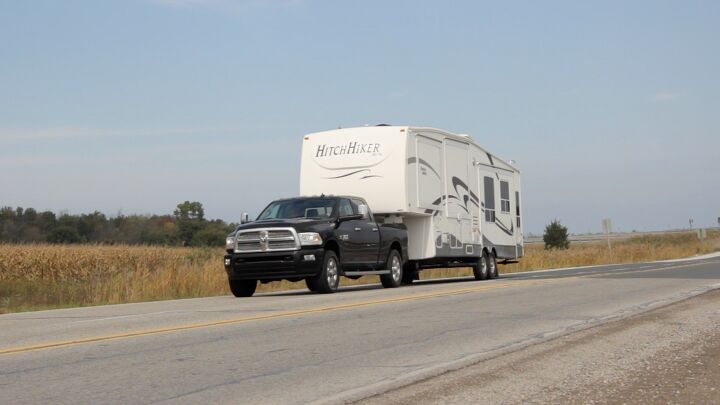















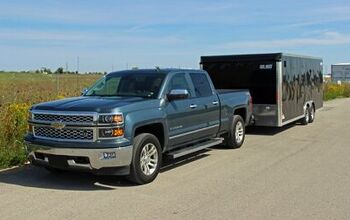



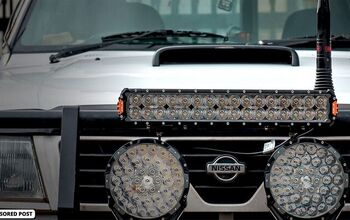
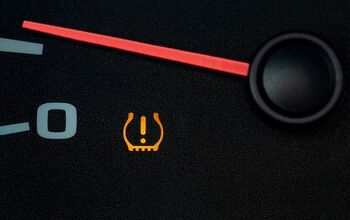

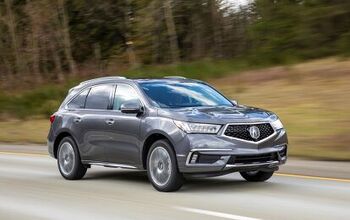



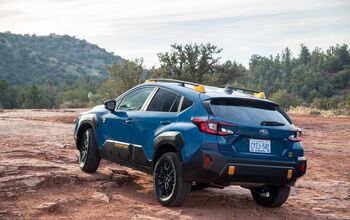



Comments
Join the conversation
We bought a Grand Design 226rk approx 28. Dry Towing weight is 7,204 pounds. Dry Pin weight is 1,190. We are buying a new truck. Looking at RAM 1500 classic. Unfortunately between the salesman, the brochure and the door sticker, they all have different payload numbers. Any advice would be appreciated.
Hello! We have a 35ft avalanche and pull with our Ram diesel. The question we have is with the strange wear on our tires! The outside edges of all 4 are wearing smooth., and the back drivers side is wearing almost 1/4 smooth on the inside of that one. Axels do not appear bent., have not hit many to almost no curbs.. ANY idea whats doing this?